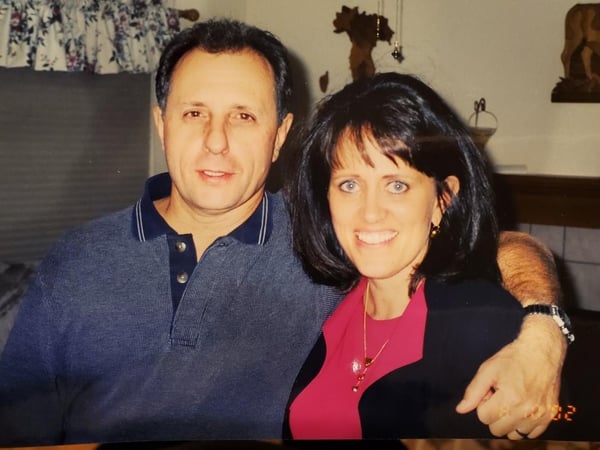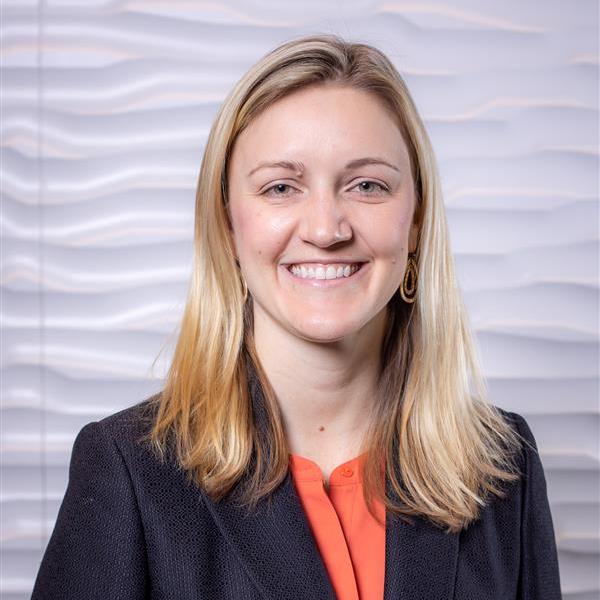“You can’t hurt steel.”
Phil Cusimano means it, too. While fixing his roof a few months ago, the 74-year-old veteran fell through and onto his patio – getting right up with nothing but a scratch.
Cusimano is known for his strength, from excelling in track and field during his high school days to enlisting in 1967 to serve in the Vietnam War. His kryptonite seemed to be his eyes.
“When I was in the service, I had vision of 20/30 and 20/40,” Cusimano recalls. “When I came back from the war, my eyes started to deteriorate. An optometrist gave me contacts, and that’s all I have worn.”
Clearer vision than ever
It wasn’t until a routine visit to Rocky Mountain Regional Veterans Affairs Medical Center (VA) in 2020 that he realized contacts may not be the only solution anymore. He was referred to Karen Christopher, MD, assistant professor of ophthalmology at the University of Colorado School of Medicine and section chief of ophthalmology at VA, for a cataract evaluation.
“When cataracts start, they cause blurry vision or halos at night. Typically, early on, that can be fixed with an updated glasses prescription, but at some point, even with new glasses, any of those symptoms may begin affecting your ability to do the things that you like to do,” Christopher says. “Phil was having symptoms, noticing difficulty with night vision, changes in blurry vision, and his prescription was probably changing more frequently.”
The two discussed cataract surgery, and he was able to undergo the procedures for each eye within weeks of each other. Afterwards, Cusimano couldn’t believe his eyes.
“Dr. Christopher had me read the chart,” he recalls. “I read the 20/10 line. She said she had never had that happen where a patient read that line two hours after surgery. Not only did she correct my distance vision, but I could read up close. I know it’s unusual to see that result for near vision.”
Cusimano’s results were particularly positive, and Christopher attributes some of that to the shape of his corneas, which are a bit steeper than normal and allow for a larger depth of focus.
“He was someone that came in totally reliant on contact lenses and glasses, and was just super nearsighted,” she says. “From the cataract surgery side of things, he was a great patient because he chose to have a distance target. After surgery, he could see uncorrected 20/20 in the distance, which is something he had never been able to do before. His near vision correction along with that was unanticipated.”

Phil Cusimano poses with his wife, Linda.
Cataract surgeries can be as quick as 15 minutes, with the entire process from evaluation to recovery lasting close to a month. Although cataract surgery is one of the most common surgical procedures performed worldwide, many patients aren’t aware of the additional benefits that Cusimano experienced.
“Most people assume that the cataract surgery is going to take the cloudiness of the vision away, but they don’t know that we can improve their need for glasses afterwards, too,” Christopher explains. “That’s the benefit of modern cataract surgery with some of the newer technology we have. We can essentially replace their prescription in their glasses with the prescription in the lens that gets implanted in their eye. That gives them a lot more independence from glasses going forward that wasn't possible decades ago.”
According to Christopher, the Rocky Mountain Regional VA Medical Center completes more than 1,100 cataract surgeries per year, and within the last year, physicians on the CU Anschutz Medical Campus have completed more than 3,300 cataract surgeries.
Across the U.S., more than 2 million procedures are performed every year, and more than 24 million worldwide.
Benefits of VA
For years, Cusimano avoided going to VA, so he was surprised to learn of the connections between VA doctors, CU, and its partners. He believes other veterans may be in the same position.
“I didn't go to the VA for years. Just didn't go. I took care of my own medical,” he says. “I didn’t think about it. You get out of the military and don’t want to go back to where you were. You want to forget that part of your life.”
“I think most veterans have no clue that this connection with CU exists,” he continues. “I didn't. It was wonderful to find out of the crossovers from the medical end of it, not just from ophthalmology.”
Christopher says she hears a mix – some patients who are eager to use their VA benefits and those who may not realize everything available to them.
“The VA system can be complex,” she says. “I think it is true that some people don’t realize that their resident physicians at Rocky Mountain Regional VA are the same residents that are rotating through the UCHealth University of Colorado Hospital, Denver Health Medical Center, and Children’s Hospital Colorado. While the physical site where people might be seen or get surgery can vary, the expertise of the faculty is still the same.”
Don’t wait
Now that he’s experienced the ease and quality of care firsthand, Cusimano couldn’t recommend it enough to other veterans. His advice is to get checked out early and often.
“Don't wait. Don't wait like I did for decades,” he says. “I was lucky, and I know not everyone would be as lucky as my situation.”
“I think having my procedure done as soon as possible with Dr. Christopher made all the difference in the world,” he continues. “I have good friends that had to wait a lot longer for surgery, and they didn't have as good successes as I did. Their recovery times were a lot longer than mine, too.”
Cusimano says his friends have waited for their cataracts to “ripen,” or reach a certain level of cloudiness before having a procedure.
“There's a sweet spot where we want the cataract to be bad enough that's affecting you and affecting your vision, but we don't want to wait so long that it's becoming difficult to take out,” Christopher explains. “If it's affecting people's vision, we can take them out at an earlier stage than what we could do 20 to 30 years ago.”
She says while it can be scary to think about a surgery on your eyes, the benefits of this procedure are high quality and long-lasting.
“A lot of people have hesitation for someone working on their eyes because it's such an important part of your life. But if we can improve it, then it's certainly worthwhile,” Christopher says. “Plus, once that cataract is removed, the cataract itself can't come back. And it won’t grow back if you get it done early either.”
Two years after surgery, Cusimano’s vision is clear. In his free time, he is working on writing children’s books – with no glasses necessary.
“I hope that his ability to see and to function as a result of my surgery has helped him do more of that and enjoy all the things he likes to do,” Christopher says.


.png)

